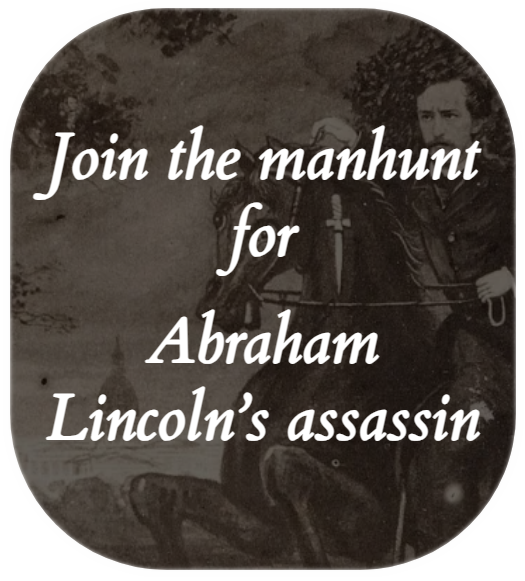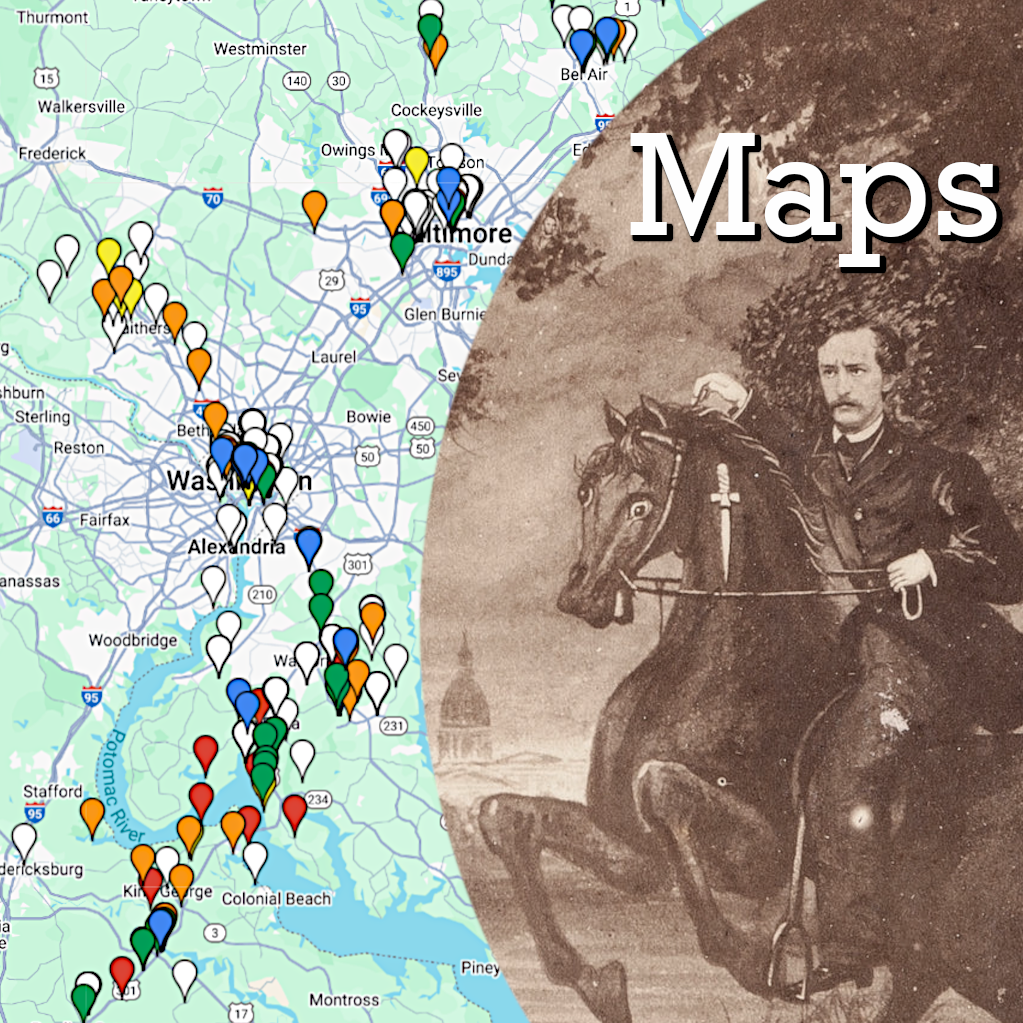Over May and June of this year, I presented a day-by-day project documenting the Trial of the Lincoln Conspirators. To further support usability of this project for students and researchers, I am releasing individualized tables of the testimony given at the trial relating to each conspirator. Rather than having to look through the entirety of the trial to gain an understanding of the specific evidence against a single person, all of the relevant testimony regarding each conspirator has been organized into an easily accessible and hyperlinked table. I have previously released the testimony regarding Mary Surratt and continue today with Lewis Powell. The text that follows this paragraph contains the same information that will always be found on a standalone page of the trial project called Lewis Powell Testimony and can be accessed by clicking the picture of Powell on The Trial homepage. The organized testimony regarding the other conspirators will be published over the next month.
The following table shows all of the testimony given at the Lincoln conspiracy trial concerning Lewis Powell, known as Lewis Payne during almost the entirety of the trial. Clicking on any of the witnesses’ names will take you to their corresponding testimony in the chronological Trial project.
The default arrangement of the witnesses in the table is by Relevant Testimony. This organizes the witnesses based on what specific aspect of the conspirator’s case was discussed. In the case of Lewis Powell, I organized the testimony into four categories, labeled A – D. Descriptions of what each category means can be found after the table. The tabs on the bottom of the table allow you to view the witnesses arranged by Date and Alphabetically by last name.
Mobile users: Due to the smaller screen size on mobile devices, you will likely have to scroll left and right on the table to see the Relevant Testimony column.
Relevant Testimony descriptions:
A. Lewis Powell’s Association with other Conspirators
The first witness to discuss Lewis Powell at the trial was a prosecution witness who claimed to have seen him in Canada plotting the assassination of Lincoln with Confederate agents. While this testimony was later found to be perjury, the prosecution did work to establish Powell’s connection to the other conspirators, mainly through his lodging at Mrs. Surratt’s boardinghouse two separate times before the assassination. Powell’s subsequent arrest at the Surratt boardinghouse was testified to several times, mostly in regards to Mrs. Surratt. This all worked to show his connection to John Surratt, Mrs. Surratt, and the other conspirators who filtered into her home.
B. Lewis Powell’s Connection to John Wilkes Booth
While going hand-in-hand with the prior descriptor, the prosecution also made sure to establish Powell’s connection with John Wilkes Booth outside of the other conspirators. The horse Powell used and the boots he wore on the night of April 14th belonged to Booth. Booth also took an active role in helping to get Powell accommodations when he was staying in D.C.
C. The Attack of Secretary Seward and his Household
The case against Powell was the strongest out of all of the conspirators. The prosecution brought forth many witnesses to identify Powell as the man who viciously attacked William Seward and other members of his household. To drive the point home, the government even had two of Seward’s doctors testify about the carnage that was wrought by Powell’s gun and knife attack. Powell was even forced to stand up and dress in the blood-stained clothing he wore on the night of April 14th for further positive identification.
D. Debate over Lewis Powell’s Sanity
The only defense that Lewis Powell’s lawyer, William Doster, attempted was that of trying to have his client declared insane. Doster first tried to show this by showing the drastic change in temperament Powell experienced between his service in the Confederacy and his time with Booth. Doster then enlisted medical experts to assess his client. Unfortunately, this plan backfired when four doctors brought in by the prosecution (one of which had been one of Doster’s witnesses) testified that Powell was not mentally insane. Doster tried to spin this to mean that his client was more likely morally insane, but this gambit failed to change the minds of the commissioners.
For the closing argument in defense of Lewis Powell please click here.
Please remember that the Relevant Testimony descriptor is not meant to be definitive. In some instances, a witness might cover material from more than one category. Still, the attempt has been made to determine the most applicable category for each witness’s overall testimony.








Thank you! Thank you! Thank you!
What a great research source.
And historical story.
You have spent many hours on this and it is appreciated.
As cool as it was doing the day by day chronology of the trial, I knew the only way to really make sense of it was to organize the witnesses for each conspirator. I’m glad you find it helpful.
Good work, Dave. I’ve found this whole process fascinating and appreciate you taking the time to put it together.
Thank you, John. It’s all to help make the trial accessible and usable. I’m glad you’ve enjoyed it.
Unbelievable what you have done here ,David. Where did you find the time. This should be an iconic commentary on the trial. Hopefully you will resubmit this yearly.
Thank you Bill. I might “re-up” the trial project as a post each year on the anniversary of its starting date, but luckily it will always be accessible to view from here on out by clicking “The Trial” on the top menu bar.